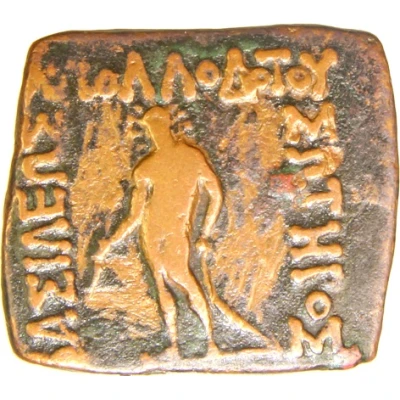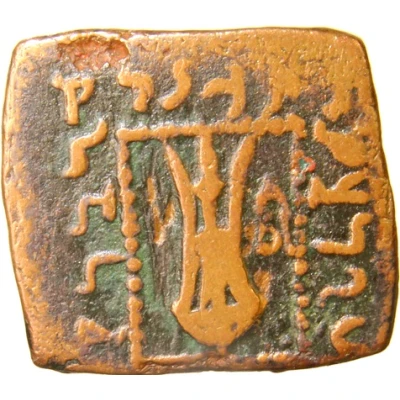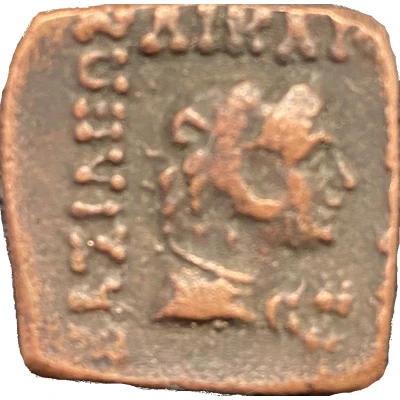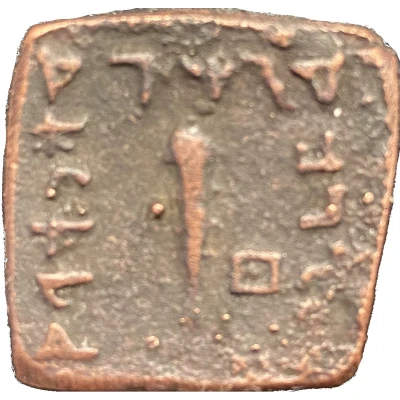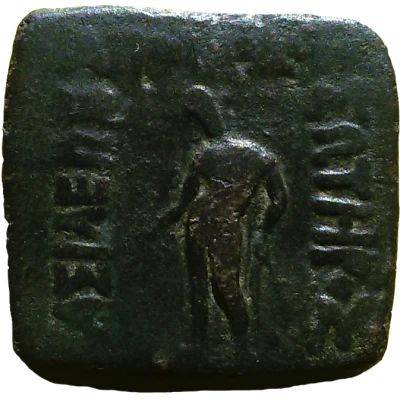
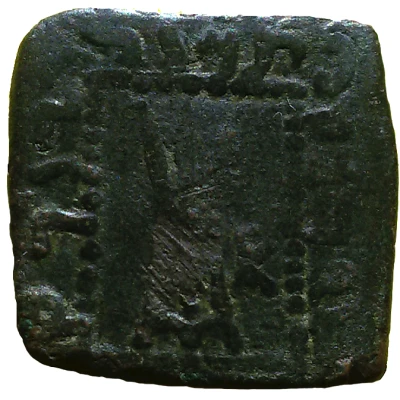

© cobrapel (CC BY-NC)
½ Obol - Apollodotus I 174 BC - 165 BC
| Bronze | 9.32 g | - |
| Issuer | Indo-Greek Kingdom (India (ancient)) |
|---|---|
| King | Apollodotus I ('Aπολλόδοτος Α΄ ò Σωτήρ) (186 BC - 160 BC) |
| Type | Standard circulation coin |
| Years | 174 BC - 165 BC |
| Value | Hemiobol (1⁄12) |
| Currency | Drachm (200 BC to 10 AC) |
| Composition | Bronze |
| Weight | 9.32 g |
| Size | 22 mm |
| Thickness | 2 mm |
| Shape | Square (irregular) |
| Orientation | Medal alignment ↑↑ |
| Demonetized | Yes |
| Updated | 2024-10-10 |
| Numista | N#188259 |
|---|---|
| Rarity index | 86% |
Reverse
Tripod within dotted border, monogram at right. Kharoshthi legend on three sides
Lettering: Maharajasa Apaladatasa Tratarasa
Translation: King Apollodotos The Saviour
Edge
Plain
Interesting fact
One interesting fact about the ½ Obol coin of Apollodotus I is that it features a unique blend of Greek and Indian artistic styles. The obverse (front) side of the coin depicts the king's portrait, while the reverse (back) side shows a representation of the Hindu goddess Lakshmi, who was revered as the goddess of wealth and prosperity in ancient India. This fusion of artistic styles reflects the cultural exchange and syncretism that occurred between the Indo-Greek Kingdom and the local Indian population during that time period.
